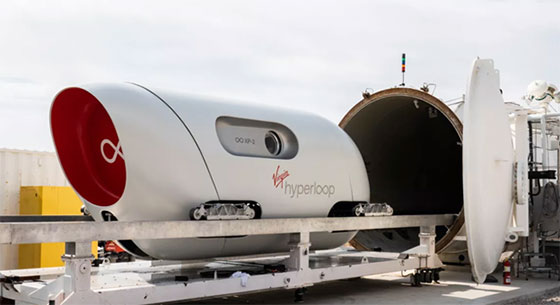维珍超级高铁预估之后会以时速600英里(约966公里)或更快的速度运行,在真空管内使用电磁悬浮展开几乎没有噪音的旅行,如此一来纽约到华盛顿只需要30分钟,速度比商用喷射飞机快2倍,更是一般高铁的4倍。
在载人测试之前,维珍超级高铁已在内华达州进行400多次无人试验,目前规划于2025年完成安全认证、2030年实现商业营运。
Here is the excerpt from another report:
The company was founded in 2014 as Hyperloop Technologies, which was based on one of Elon Musk's eccentric ideas.
Musk published a paper back in 2013 about an obscure technology that used aerodynamic aluminum capsules and magnetic levitation to transport passengers through a near-vacuum tube. They would be able to potentially travel at speeds as fast as airplanes with a fraction of the energy use.
He envisioned that this new method of transport would be in tubes raised off the ground or possibly in subterranean tunnels.
Of course, this sounded like just another one of Musk's crazy ideas at the time.
But Virgin Hyperloop – then named Hyperloop Technologies – set out to make this crazy idea a reality. The company was renamed Virgin Hyperloop in 2017 when Virgin Galactic founder Richard Branson made a major investment in the company.
And Virgin Hyperloop recently hit a major milestone. It just completed its first test with human passengers.
The test run took place at Virgin Hyperloop's test facility outside Las Vegas. During the test, two people were transported in a capsule through a tube 500 meters long. The capsule hit top speeds at just over 100 miles per hour (mph). And then it came to safe a stop at the end of the tube.
Virgin Hyperloop Capsule

Source: Virgin Hyperloop
Not so crazy anymore.
And Virgin Hyperloop confirmed that the capsule could have gone much faster on a longer track. The only reason it kept it to 100 mph is that faster acceleration and deceleration on the 500 meter track would have been uncomfortable for the human passengers.
Of course, higher speeds wouldn't be a problem in a hyperloop stretching hundreds of miles. In fact, this technology could achieve speeds of 600 mph or more.
That's enough to make trips from Los Angeles to San Francisco (nearly 382 miles) in just half an hour or so.
What's exciting to me is that this is now real. The technology works. Now it is only a matter of engineering to scale this up for longer runs. I can't wait to see which cities have the foresight and discipline to start employing this new technology.
The world's ground-based transportation systems, with the exception of Japan, are long overdue for a major upgrade.



No comments:
Post a Comment